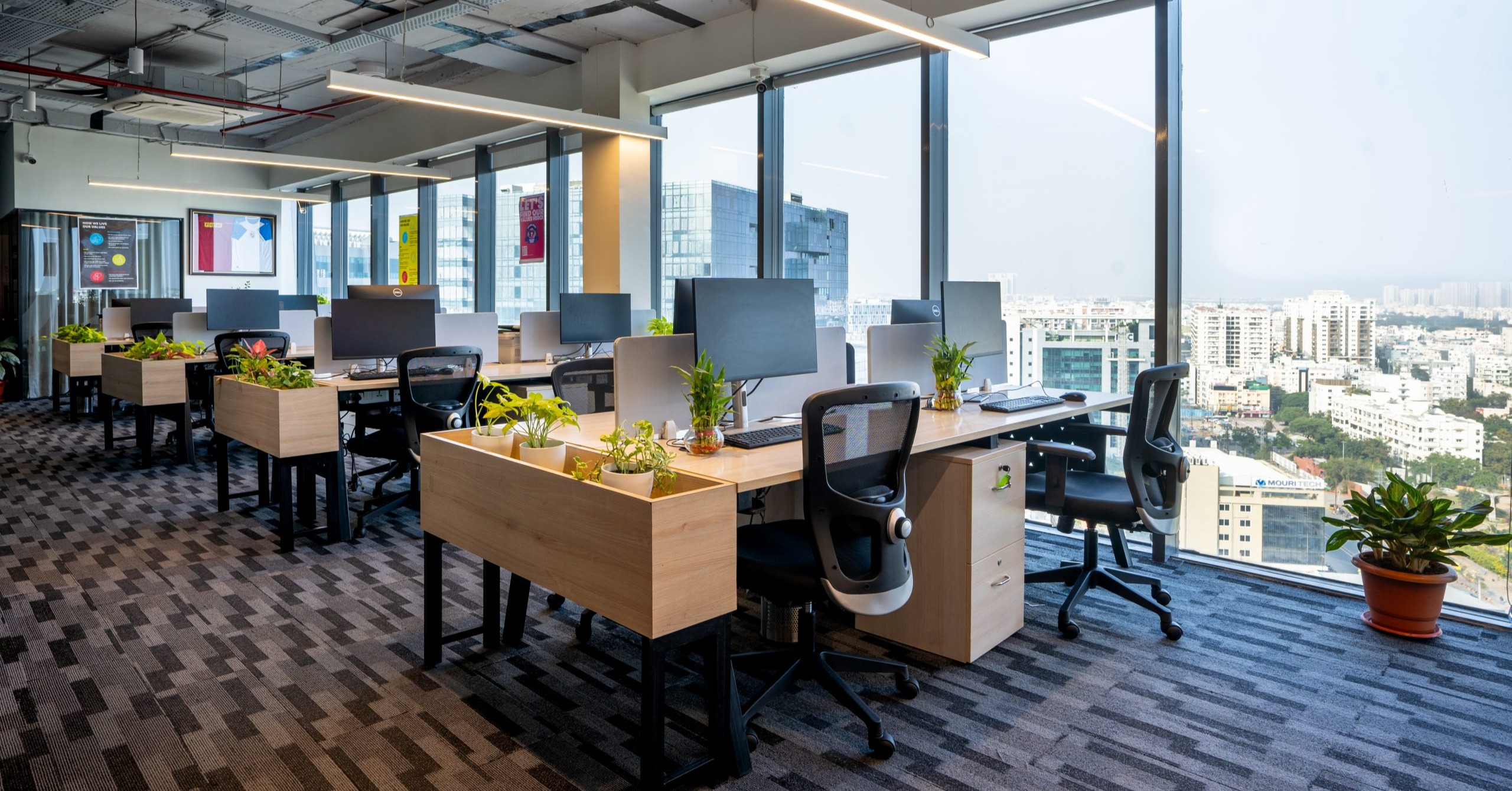Coworking
Women Safety in Coworking Spaces: Scenario & Practices
Sowmya Sankaran / Reading Time: 6 mins
If you lead or influence a coworking program in India, women’s safety isn’t a compliance checkbox—it’s a growth lever and a trust contract. You win or lose members on whether women (and teams hiring women) feel comfortable working late, commuting to your location, and reporting issues without fear.
National perception data shows why this is urgent: about 4 in 10 women in Indian cities say they feel “not so safe” or “unsafe” in their city environments, with night-time and en-route spaces like neighborhoods and public transport driving most anxiety.That perception travels with your members from the metro platform, footpath, and parking lane straight into your building—and it shapes whether they book your space again, refer colleagues, or churn.
Key chapter:
What “Safety” Means in Coworking Spaces
You ensure safety on three fronts that your members actually experience daily. First is physical safety: well-lit approaches and entrances, staffed reception, CCTV in common areas, controlled access (without tailgating), clearly marked emergency exits, and clean, well-maintained restrooms. Second is psychological safety: a visible, enforced zero-tolerance policy for harassment; a code of conduct that applies to every person on premises (employees, members, guests, vendors); and community norms that make women feel respected, heard, and welcome.
Third is operational safety: late-hour staffing and escorts when needed, incident reporting that protects anonymity, fast and fair resolution pathways consistent with India’s POSH Act principles (Internal Committee/Local Committee when applicable), and periodic safety drills and communication so people know how to get help in seconds—not hours.
Are women feeling safe in coworking spaces?
Perception data isn’t collected “by coworking” at national scale, but adjacent indicators are instructive for you as an operator or enterprise buyer. The NARI 2025 index finds that 40% of urban women feel unsafe or “not so safe,” with safety dropping after dark and trouble spots clustering around neighborhood streets, public transport, and recreational zones—exactly the spaces your members traverse to reach your center. City-level snapshots echo this: for example, Chennai’s overall perceived safety sits below the national average and declines at night.
Official crime data underscores the context your members are weighing. NCRB 2023 shows crimes against women rose ~4% year-on-year nationally, with major metros like Delhi, Mumbai, and Bengaluru continuing to report high absolute numbers and heavy police charge-sheeting workloads. Remember: even if your building is safe, the commute risk influences whether women book evening meetings, accept freelance gigs at your site, or prefer hybrid/remote days.
Put bluntly: you can’t separate “coworking safety” from door-to-desk safety. Your members evaluate both.

How coworking providers across India are addressing women’s safety
You’re not starting from zero; many Indian operators have built a baseline of measures. Large networks publicize inclusion and safety culture, emphasizing diverse leadership and community policies, which helps set expectations for behavior on site. Some operators have run POSH awareness and training for member companies—particularly after #MeToo highlighted gaps in startups and SMEs—and encouraged tenants to maintain Internal Committees as required by law.
Mature operators also talk openly about listening systems (surveys, office hours, women’s circles) to surface micro-issues before they become incidents, and to strengthen psychological safety.
Where you’ll see variability is in execution depth: the thoroughness of access-control (visitor logs, badge audits, anti-tailgating), CCTV coverage and retention policies, after-hours staffing, parking and approach lighting, and the clarity/speed of incident response mapped to POSH frameworks (IC/LC, timelines, confidentiality, non-retaliation).
The legal floor—POSH Act requirements for Internal Committees in establishments with 10+ employees and Local Committee recourse otherwise—exists, but tenants in shared spaces don’t always know whom to contact or whether the coworking operator or the tenant company owns the process. Your job is to remove that ambiguity.
Also read: A worrying trend in coworking spaces
Recommended practices for safety in coworking spaces
If you want women to choose your locations repeatedly, build a layered system that members can see and trust.
Make access and visibility obvious. Keep external approaches, parking areas, and lobbies brightly lit; use functioning CCTV in entrances, lift lobbies, corridors, and other shared zones with clear “monitored” signage; and deploy trained, badge-aware security at peak and late hours. Publish your staffed hours so women can plan late sessions with confidence.
Codify behavior—and enforce it for everyone. Display a short, human-readable code of conduct at reception, in booking confirmations, and on community boards. Tie membership and guest access to acceptance of these terms. Explicitly ban harassment (verbal, visual, physical, digital), stalking, and unwanted photography/recording.
Operationalize POSH-aligned reporting. Provide multiple reporting channels (QR to webform, email, hotline, named community manager) and respect anonymity. Where you employ 10+ staff at a center, maintain or link to an Internal Committee (IC); otherwise, direct complainants to the Local Committee while committing to your own immediate site-safety actions. Communicate timelines, non-retaliation, and interim measures (e.g., access restrictions for alleged harassers pending inquiry).
Also read: How to Boost Business Networking in Coworking Spaces (9+ Promising Ways)
Design for safety by default. Favor sightlines over blind corners; place help points and panic buttons where late-hour users naturally pass; ensure clean, lockable, well-lit women’s restrooms near active areas; and signage that is high-contrast and multilingual. For multi-level facilities, signpost the fastest exit and keep it unobstructed.
Close the commute gap. Share practical arrival instructions (nearest well-lit gate, last-mile landmarks), note police help numbers and building security contacts in every booking confirmation, and coordinate with building management to improve lighting and guard presence at known dark spots. Your “door-to-desk” guide is a differentiator.
Train, rehearse, measure, improve. Run regular POSH awareness refreshers for staff and host opt-in sessions for member teams; brief security on de-escalation; and rehearse late-night incident playbooks. Track leading indicators: safety-related tickets, average response time, after-hours footfall by gender, restroom cleanliness scores, and satisfaction deltas in women-only surveys. Publish improvements—trust grows when women see action.
Signal inclusion in your community fabric. Sponsor women-led meetups, provide lactation/quiet rooms where feasible, and host channels (Slack/WhatsApp) with clear moderation rules. Visible, routine inclusion work reduces bystander silence and normalizes intervention.
Need help with choosing the right space?

Ajay
Sales expert
Chat with our CEO directly to know more about how GoFloaters can help your business





Conclusion
You can’t promise a risk-free world, but you can design a workspace where women feel seen, believed, and protected. The national picture tells you why: 40% of urban women still don’t feel safe, and overall crime reports remain high across big metros.
When you treat safety as a business system—physical, psychological, and operational—you don’t just meet the POSH baseline; you earn trust, late-hour bookings, and long-tenure customers who bring others with them. In a competitive coworking market, that’s your edge: a space where women choose to stay, lead, and thrive—day and night.

